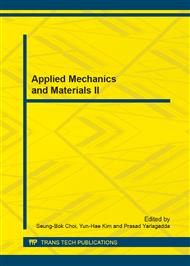p.30
p.34
p.39
p.45
p.49
p.54
p.58
p.63
p.69
Design of Flat Ends in Pressure Boilers with Circular and Elliptical Stress Relieve Grooves
Abstract:
Flat ends in cylindrical pressure vessels are a certain alternative for commonly used in boilers dished ends. These ends can have different form and one of the admitted proposals is the plate with the internally introduced circumferential stress relief groove. In codes [1, the grooves of circular shape are recommended. Three parameters describe the groove configuration, namely the groove radius, the minimum endplate thickness under the relief groove and the chamfer angle. The respective formulas for calculations of the first two parameters are expressed in the form of inequalities. This means that a certain range of their variation is possible. The existing codes do not give the clear suggestion about the optimal choice of values of the groove parameters, leading to the minimal value of the stress concentration in the groove area. This is usually done by numerical analysis. The significant reduction of stress concentration is observed when changing the shape of the groove from the circular to the elliptical one, which is also shown in the paper.
Info:
Periodical:
Pages:
49-53
Citation:
Online since:
December 2013
Authors:
Price:
Сopyright:
© 2014 Trans Tech Publications Ltd. All Rights Reserved
Share:
Citation:


